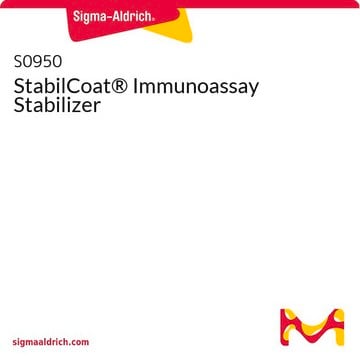S2002
Sodium azide
ReagentPlus®, ≥99.5%
Sinônimo(s):
Hydrazoic acid sodium salt
About This Item
Produtos recomendados
fonte biológica
synthetic (inorganic)
Nível de qualidade
linha de produto
ReagentPlus®
Ensaio
≥99.5%
forma
powder
condição de armazenamento
(Tightly closed. Dry. Keep in a well-ventilated place. Do not store near acids.)
técnica(s)
cell based assay: suitable
immunohistochemistry: suitable
cor
white
pf
370-425 °C
solubilidade
soluble 65 g/L at 20 °C (completely)
adequação
suitable for chromatography
suitable for derivatization
aplicação(ões)
sample preparation
cadeia de caracteres SMILES
[Na]N=[N+]=[N-]
InChI
1S/N3.Na/c1-3-2;/q-1;+1
chave InChI
PXIPVTKHYLBLMZ-UHFFFAOYSA-N
Procurando produtos similares? Visita Guia de comparação de produtos
Descrição geral
Aplicação
Catalyst for:
- Oxidative decarboxylation
- Michael addition reactions
Reagent for synthesis of
- Blue fluorescent copolymers
- Metal phosphonates
- Arenes via aminations
Ações bioquímicas/fisiológicas
Outras notas
Informações legais
luvas sugeridas para proteção de respingos
produto comparável
Palavra indicadora
Danger
Frases de perigo
Declarações de precaução
Classificações de perigo
Acute Tox. 1 Dermal - Acute Tox. 2 Inhalation - Acute Tox. 2 Oral - Aquatic Acute 1 - Aquatic Chronic 1 - STOT RE 2 Oral
Órgãos-alvo
Brain
Perigos de suplementos
Código de classe de armazenamento
6.1A - Combustible acute toxic Cat. 1 and 2 / very toxic hazardous materials
Classe de risco de água (WGK)
WGK 2
Ponto de fulgor (°F)
Not applicable
Ponto de fulgor (°C)
Not applicable
Choose from one of the most recent versions:
Já possui este produto?
Encontre a documentação dos produtos que você adquiriu recentemente na biblioteca de documentos.
Os clientes também visualizaram
Protocolos
Antibody purification protocols yield preparations containing endogenous IgG alongside specific antibodies.
Detailed ELISA protocols cover indirect and capture ELISA techniques, recommending products for sandwich and indirect ELISA experiments.
Nossa equipe de cientistas tem experiência em todas as áreas de pesquisa, incluindo Life Sciences, ciência de materiais, síntese química, cromatografia, química analítica e muitas outras.
Entre em contato com a assistência técnica








